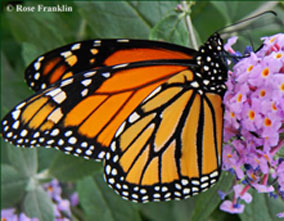
Monarchs-And-Milkweed.com
(Rose Franklin's Perennials)
Monarch Photos
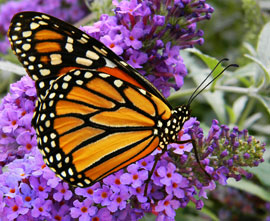
|
Monarchs-And-Milkweed.com
|
|
![]()
On this page, we share some of
the photos we have taken over the past 30 years: in the garden, in our flight
rooms, in our Monarch rearing facility, and on our 2018 trip to Mexico,
where we visited not one, but three, of the Monarch over-wintering
sanctuaries. |
![]()
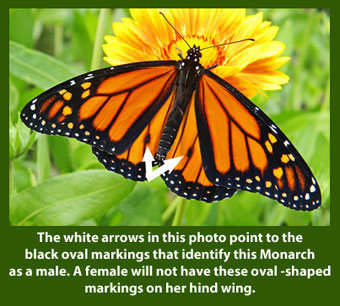 |
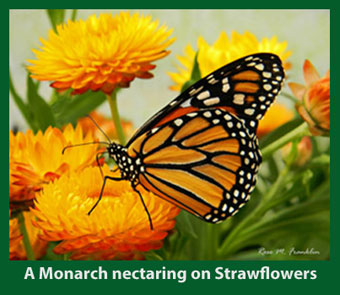 |
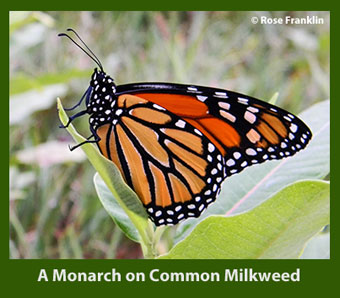 |
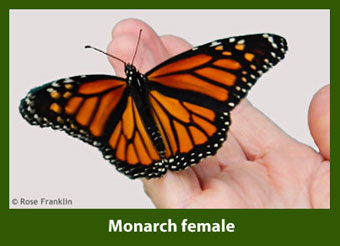 |
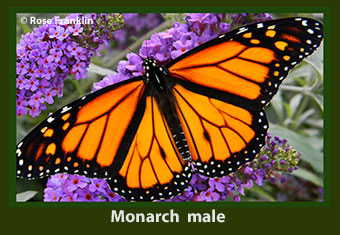 |
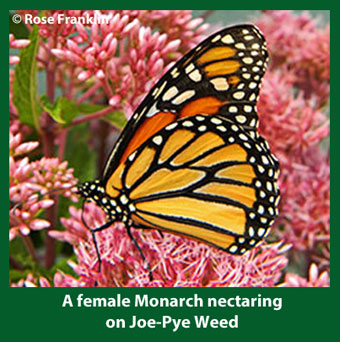 |
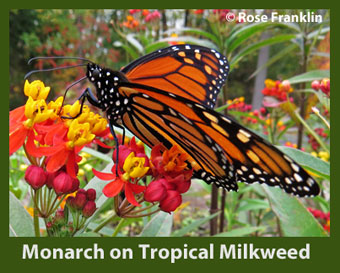 |
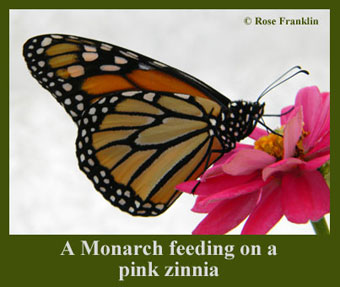 |
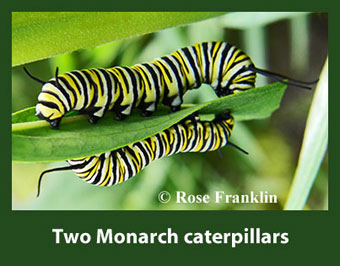 |
| Monarchs in their over-wintering grounds in Mexico, 2018: | ||
 |
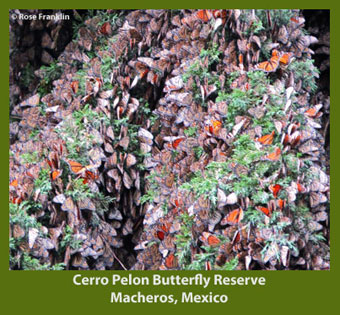 |
 |
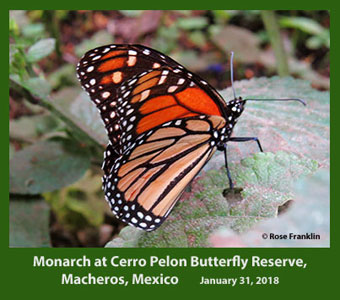 |
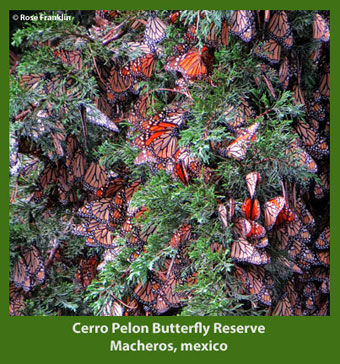 |
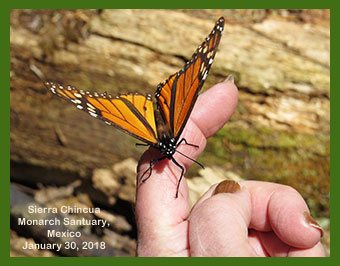 |
| White Monarchs are extremely rare....so we were surprised and amazed to find white Monarchs emerging here in our rearing facility in September, 2018: | ||
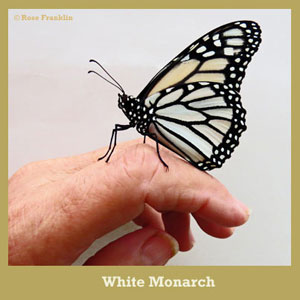 |
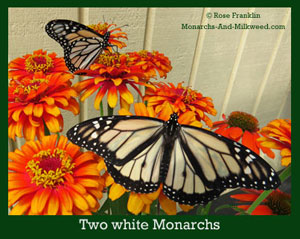 |
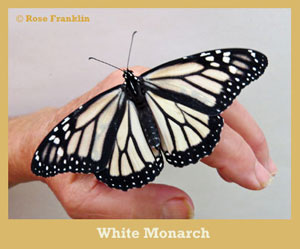 |
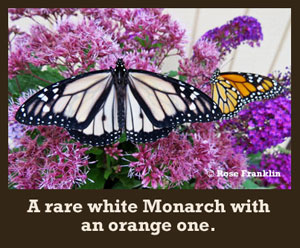 |
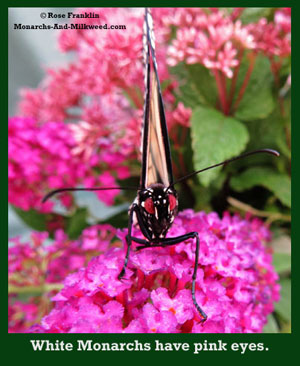 |
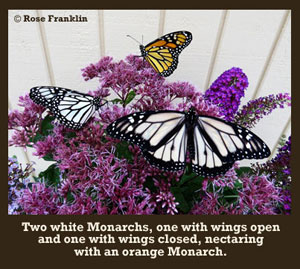 |
![]()
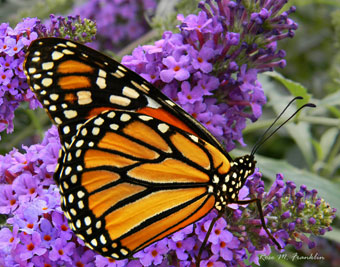 |
Once a Monarch emerges from its pupa
(chrysalis), how long does it live? Monarchs that emerge from their pupae between spring and late August only live about three weeks. Their primary purpose is to reproduce. A female Monarch can lay more than 300 eggs in the couple of weeks she is alive, but most of those eggs (or the caterpillars that hatch) will be devoured by predators. More will become infected with disease and perish. Only about 2% of the eggs laid will survive long enough to produce adults. Monarchs that emerge from their pupae from late August through early October have immature reproductive organs and are not capable of reproducing. These Monarchs will nectar, store energy in the form of fat, and then head for the mountains of central Mexico, where they will over-winter. The temperature is generally 40 to 50 degrees in these mountains, so the Monarchs are at rest most of the time as it is too cold for them to fly. By late February, when milkweeds are beginning to grow in Texas, and the fir forests of Mexico are warming up for spring, the Monarchs will mate and the females will fly to Texas, where they will lay eggs and then expire. It will be their offspring that continue the journey northward. |
![]()
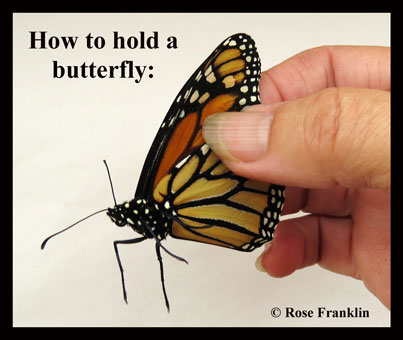 |
Is it OK to hold a Monarch? Won't they
be unable to fly if touched? A lot of people where taught in school that you should never, ever touch a butterfly. Doing so could make it unable to fly or worse, the butterfly might die if you held it. This is not true. Monarchs, and other butterflies too, have wings that are coated with tiny scales. Under a microscope, these scales resemble fish scales. They overlap like shingles on a roof. In touching a butterfly, you will remove some of their scales, but they will still be able to fly and they certainly will not die Here's a photo of how you should hold a butterfly so you won't hurt it.. Even in nature, Monarchs loose some of their scales, lots of them, just by rubbing against plants and other objects that their wings come in contact with. But butterflies are not toys and should not be handled and played with like they are toys. They are fragile and should not be touched unnecessarily. |
![]()

|
Rose Franklin's
Perennials (814)
422-8968
Email: MilkweedLady@aol.com |
Copyright © 2002-2024. [Rose Franklin's Perennials]. All rights reserved.
Revised: February 15, 2024